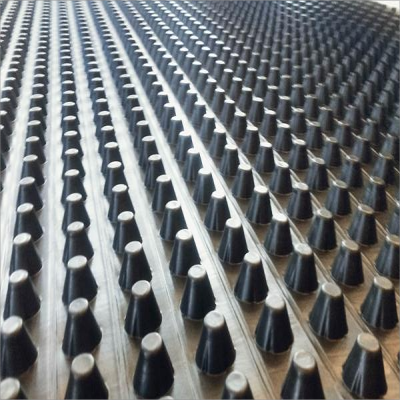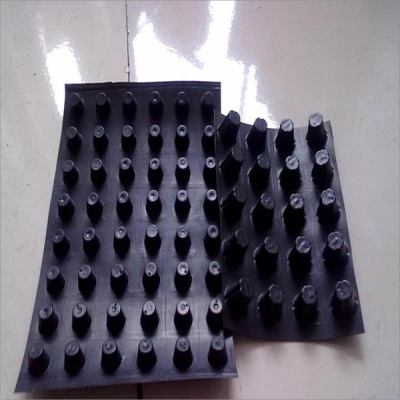Drainage board is an efficient and economical drainage material, which is commonly used in waterproofing and drainage systems in basements, roofs, tunnels, highways and railways. So, how does it lap?

1. The importance of overlapping drainage boards
Drainage board overlap is a key link in the installation process of drainage system. Correct overlap can ensure that a continuous drainage channel is formed between the drainage boards, which can eliminate standing water, prevent moisture penetration and protect the building structure from water damage. Good lap joints also enhance the overall stability of the drainage board and improve the durability of the system.
2. Preparation before overlapping the drainage board
Before overlapping the drainage board, make full preparations. To check the quality of the drainage board, make sure it meets the design requirements and relevant standards. It is also necessary to clean up the paving area, remove debris, dust, etc., and ensure that the paving surface is smooth and dry. Then, according to the design drawings and the actual situation of the site, the laying direction and overlap sequence of the drainage board are determined.
3. Drainage board overlap joining method
1、Direct lap joint method
Direct lap is the simplest lap method and is suitable for areas with high slopes and faster water flows. When overlapping, directly connect the edges of the two drainage boards to ensure that the overlapping joints are tightly fitted and there are no gaps. In order to enhance the stability of the overlap, special glue or hot melt welding can be applied to the overlap. However, the direct overlap method has great limitations and is not suitable for areas with small or no slope.
2、Hot melt welding method
Hot melt welding is one of the most commonly used and reliable methods in drain board lap joining. This method uses a hot melt welding machine to heat the overlapping edges of two drainage boards to a molten state, and then quickly presses and cools to solidify to form a firm welded joint. Hot melt welding has the advantages of high strength, good sealing and fast construction speed, and is suitable for various complex terrain and climatic conditions. However, hot melt welding should be equipped with professional equipment and operators, and it also has certain requirements for the construction environment.
3、Special adhesive method
The special adhesive method is suitable for occasions that require high overlap strength of drainage boards. This method is to glue the overlapping edges of two drainage boards together with special glue. Special glue should have good water resistance, weather resistance and bonding strength to ensure long-term stability of overlapping joints. However, the construction of the adhesive method is relatively cumbersome, and the curing time of the glue is long, which may affect the construction progress.

4. Precautions for overlapping drainage boards
1、Overlap length: The overlap length of drainage board should be determined according to design requirements and relevant standards, generally not less than 10 cm。 Too short the overlap length may lead to lax sealing of the overlap and affect the drainage effect; Excessive overlap length may increase construction costs and time.
2、Overlap direction: The overlap direction of the drainage board should be consistent with the direction of water flow to ensure the smooth discharge of water flow. Under special circumstances, such as encountering corners or irregular shaped areas, the overlap direction should be adjusted according to the actual situation.
3、Construction quality: When the drainage board is overlapped, ensure that the overlap is smooth, wrinkle-free and free of gaps. After the overlap is completed, a quality inspection should be carried out to ensure that the overlap is firm and well sealed.
4、Construction environment: The overlapping construction of drainage boards cannot be carried out in rainy days, high temperatures, strong winds and other severe weather conditions. The construction environment should be dry, clean and free of dust and other pollutants.
Post time: Mar-11-2025



